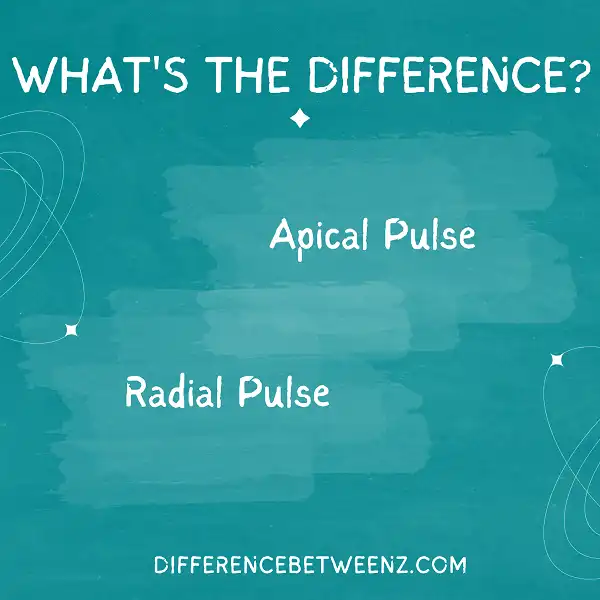When you go to the doctor, one of the first things they will check is your pulse. But do you know what the difference between an apical and radial pulse is? In this blog post, we will explore the differences between these two types of pulses and how to take each one. So keep reading to learn more!
What is Apical Pulse?
Apical Pulse is the pulse felt at the apex of the heart. It can be palpated at the fifth intercostal space, midclavicular line. Apical pulse is caused by the contraction of the left ventricle of the heart.
- The Apical Pulse is normally 60-100 beats per minute. To palpate the Apical Pulse, use your index and middle fingers and place them on the chest at the fifth intercostal space, midclavicular line.
- Use light pressure and feel for a tapping sensation. The Apical Pulse can be checked to assess heart rate and rhythm. It can also be used to assess cardiac function.
- The Apical Pulse can be increased in heart rate due to exercise, anxiety, or fever. A decreased Apical Pulse can be due to hypotension or bradycardia. An irregular Apical Pulse can be due to arrhythmias.
What is Radial Pulse?
Radial pulse is a type of pulse that can be felt on the radial artery, which is located on the thumb side of the wrist. Radial pulse is used to measure heart rate and blood pressure.
It is also used to check for signs of cardiovascular disease. Radial pulse can be measured with a stethoscope, or by feeling the artery with the fingers. To measure radial pulse, place the index and middle fingers on the radial artery, just below the thumb.
Press gently until you feel a pulsing sensation. Count the number of pulses for 30 seconds, and then multiply by 2 to get the heart rate per minute. Radial pulse should be regular and smooth. If it is irregular or bumpy, it may be a sign of heart disease.
Difference between Apical and Radial Pulse
Apical and radial pulse are two terms that are often used interchangeably, but they actually refer to two different things.
- The apical pulse is the pulse that is felt at the apex of the heart, whereas the radial pulse is the pulse that is felt at the wrist.
- Both of these pulses can be used to assess a person’s cardiacfunction, but they each have their own advantages and disadvantages.
- For example, the apical pulse is more accurate in determining heart rate, but it can be more difficult to palpate.
- In contrast, the radial pulse is easier to palpate, but it can be less accurate in determining heart rate.
As a result, both pulses should be assessed in order to obtain a complete picture of a person’s cardiac function.
Conclusion
The radial pulse is easier to find and feels stronger because it’s closer to the surface. If you’re having trouble finding your radial pulse, try placing your fingers on your wrist just below the thumb. You’ll feel a strong beat there if you press down gently. Now that you know how to find both pulses, test them out on each other and see which one is stronger.


